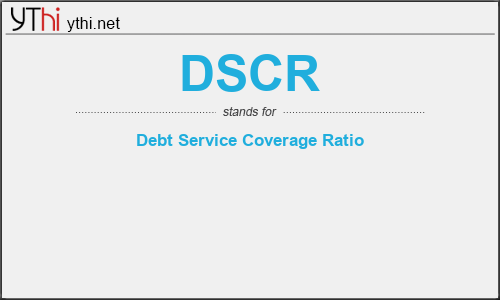What does DSCR mean? What is the full form of DSCR?
The full form of DSCR is Debt Service Coverage Ratio.
The Debt Service Coverage Ratio (DSCR) measures the ability of a company to use its operating income to repay all its debt obligations, including repayment of principal and interest on both short-term and long-term debt. This ratio is often used when a company has any borrowings on its balance sheet such as bonds, loans, or lines of credit. It is also a commonly used ratio in a leveraged buyout transaction, to evaluate the debt capacity of the target company, along with other credit metrics such as total debt/EBITDA multiple, net debt/EBITDA multiple, interest coverage ratio, and fixed charge coverage ratio.
Debt Service Coverage Ratio Formula
There are two ways to calculate this ratio:

Where:
- EBITDA = Earnings Before Interest, Tax, Depreciation, and Amortization
- Principal = the total loan amount of short-term and long-term borrowings
- Interest = the interest payable on any borrowings
- Capex = Capital Expenditure
Some companies might prefer to use the latter formula because capital expenditure is not expensed on the income statement but rather considered as an “investment”. Excluding CAPEX from EBITDA will give the company the actual amount of operating income available for debt repayment.
When you apply for business loans, lenders use a variety of quantitative and qualitative metrics to assess your eligibility. Among these metrics, DSCR is one of the most important because it goes to the heart of the question that every lender tries to answer: Can you pay back this loan on time and in full?
Your business’s DSCR helps the lender determine whether or not your business can take on the small business loan, how large a loan to approve, and what terms you’ll get on the financing.
Calculating DSCR isn’t as simple as plugging some numbers into a formula. You need to understand how to interpret your result, what goes into the calculation, and which lenders check DSCR. Learn about all of this, plus how to improve your DSCR if your ratio isn’t high enough to qualify for the best financing. Start with this video to understand why this metric is important.
DSCR
means
Debt Service Coverage Ratio![]()
Translate Debt Service Coverage Ratio to other language.


Leave a Reply
You must be logged in to post a comment.